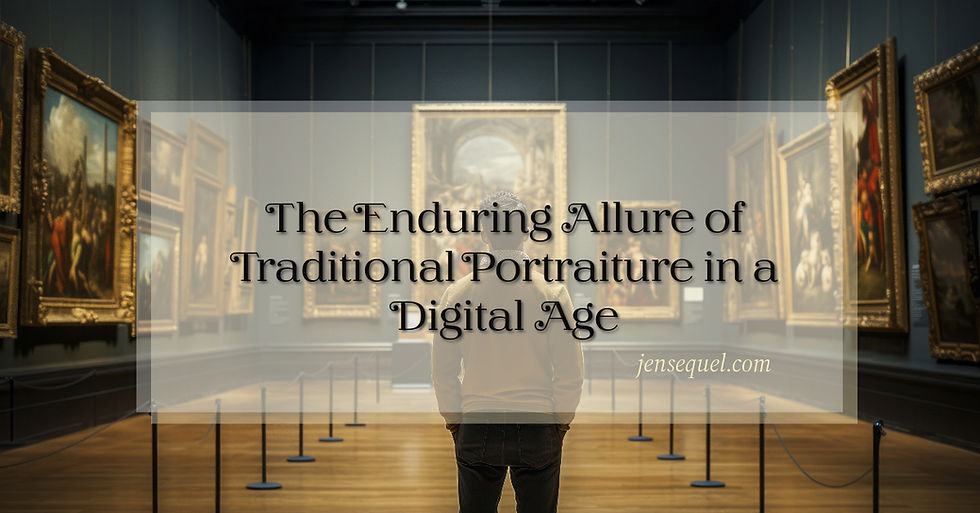Unveiling the Canvas: Redefining the "Real" Artist in a Changing Artistic Landscape
- Jen Sequel
- Dec 27, 2023
- 2 min read

The realm of art has long been a canvas for the exploration of creativity, technique, and expression. However, the definition of a "real" artist is a notion that has stirred debates throughout art history, particularly in the context of evolving tools and methods. As the art world continues to transform, the question arises: What criteria truly define a "real" artist, and how has the evolution of tools shaped the artistic narrative?
The Traditionalist Stance: Drawing Daily and Freehand
In certain artistic circles, a prevailing belief asserts that only "real" artists draw daily and create freehand, eschewing aids such as grids and lightboxes. This perspective is rooted in the romanticized image of the artist as an individual who effortlessly brings their vision to life with nothing more than raw talent and unbridled passion. However, this viewpoint tends to overlook the rich history of artistic innovation and adaptation.
Evolution of Artistic Tools: A Historical Perspective
Throughout history, artists have consistently embraced new tools and techniques to push the boundaries of their craft. From the Renaissance masters' use of the camera obscura to the Impressionists' experimentation with new pigments, each era has witnessed the integration of novel methods. These adaptations have not diminished the legitimacy of artists but have instead expanded the possibilities for creative expression.
Projectors and the Digital Revolution: A Modern Illustration
The advent of the digital art world marked a significant shift in artistic practices. Traditional illustrators faced a dilemma as they navigated the transition to digital mediums. To remain competitive, many artists incorporated projectors into their workflows, allowing them to transfer and refine hand-drawn sketches onto digital canvases. This adaptation illustrates the inherent flexibility of artists in embracing tools that enhance their creative process.
Redrawing Boundaries: Embracing Change and Diversity
The debate over what constitutes a "real" artist often hinges on a narrow definition that neglects the dynamic and ever-changing nature of artistic expression. True artistic prowess lies not in adherence to rigid standards but in the ability to adapt, innovate, and communicate through diverse means. The use of tools should be viewed as a reflection of an artist's resourcefulness, not as a compromise of authenticity.
Inclusive Perspectives: Acknowledging Diverse Artistic Journeys
Rather than imposing a singular narrative of what defines a "real" artist, it is crucial to acknowledge the multitude of artistic journeys. Some artists find liberation in freehand creation, while others thrive by incorporating technology and aids into their process. The art world is a vibrant tapestry woven from various threads of creativity, and each artist contributes a unique strand to the larger narrative.
The Unbounded Palette of Artistic Authenticity
In the ever-evolving landscape of art, the concept of a "real" artist is a subjective and fluid notion. Embracing the evolution of tools and techniques as integral components of artistic expression expands our understanding of what it means to be an artist. The true essence of art lies in the passion, innovation, and diversity that artists bring to their craft, transcending narrow definitions and celebrating the boundless palette of artistic authenticity.




Comments